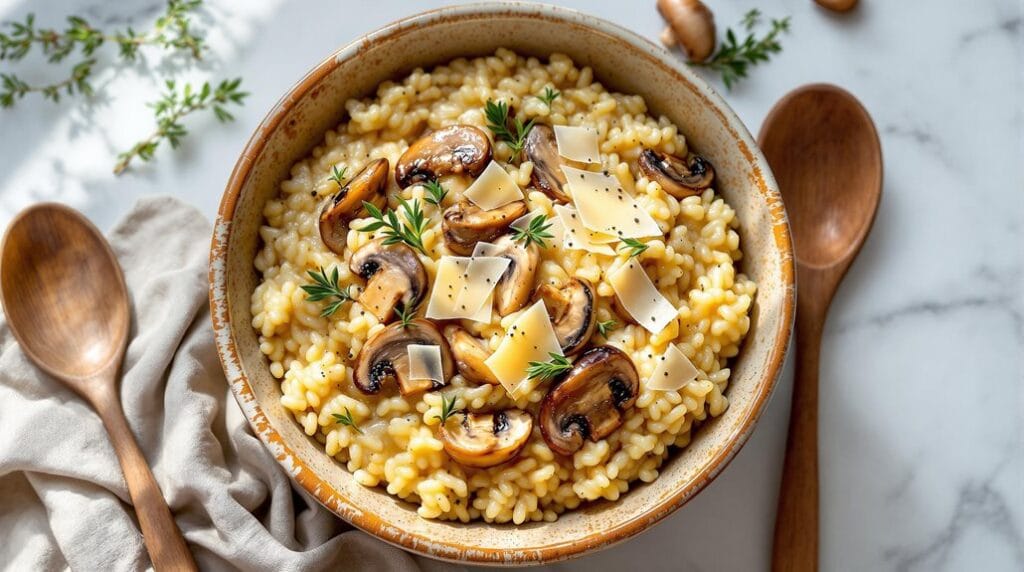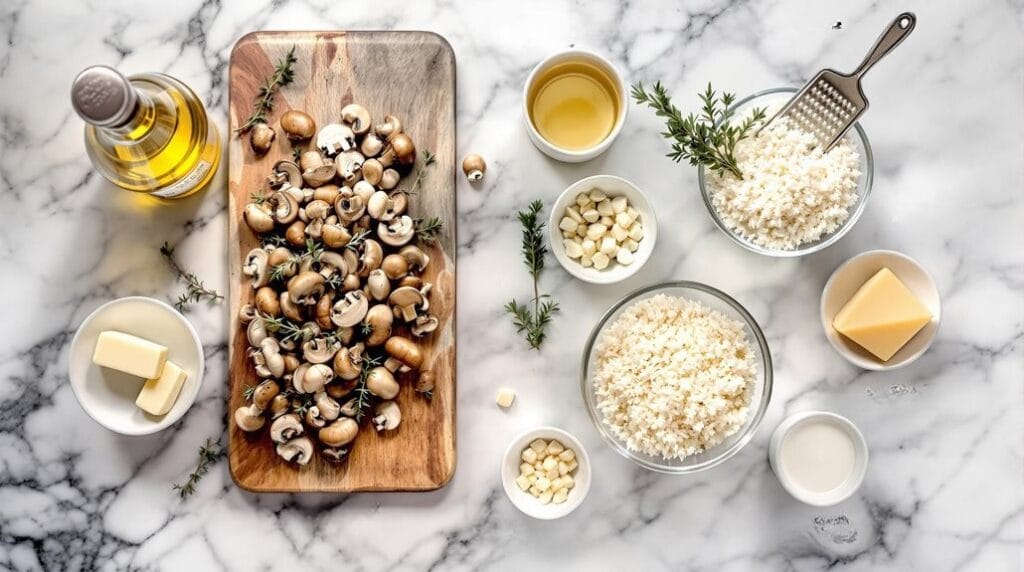Servings 4
- Amount Per Serving
- % Daily Value *
- Total Fat 28.46g44%
- Saturated Fat 14.1g71%
- Trans Fat 0.37g
- Cholesterol 60.48mg21%
- Sodium 1123.87mg47%
- Potassium 591.61mg17%
- Total Carbohydrate 76.25g26%
- Dietary Fiber 5.11g21%
- Sugars 5.49g
- Protein 15.89g32%
- Vitamin A 220.78 IU
- Vitamin C 10.91 mg
- Calcium 248.5 mg
- Iron 5.23 mg
- Vitamin D 0.75 IU
- Vitamin E 1.51 IU
- Vitamin K 11.47 mcg
- Thiamin 0.57 mg
- Riboflavin 0.58 mg
- Niacin 7.15 mg
- Vitamin B6 0.43 mg
- Folate 37.24 mcg
- Vitamin B12 0.28 mcg
- Phosphorus 317.36 mg
- Magnesium 54.5 mg
- Zinc 2.16 mg
* Percent Daily Values are based on a 2,000 calorie diet. Your daily value may be higher or lower depending on your calorie needs.
Note
Tips: For best results, use room temperature stock and stir the risotto occasionally during cooking.
Don't skip the wine as it adds depth to the flavour. If the risotto becomes too thick, add a splash of hot stock.
The finished texture should be creamy and flowing, not stiff. Let the risotto rest for 2 minutes before serving to achieve the perfect consistency.
Garnish With Fresh Herbs
While the risotto's rich flavours speak for themselves, fresh herbs provide both visual appeal and an aromatic finishing touch. You'll want to choose herbs that complement the dish's existing flavours, particularly the earthy mushrooms and fragrant thyme that are already present in your risotto.
Sprinkle a generous amount of freshly chopped thyme leaves over the top of your finished risotto, and don't be shy about adding some fresh Italian parsley for a pop of bright green colour. If you're feeling adventurous, you can also add a few leaves of fresh sage, which pairs beautifully with mushrooms.
Make sure you've washed and thoroughly dried your herbs before chopping them, as wet herbs can affect the risotto's carefully balanced consistency.
For the best presentation, scatter the herbs just before serving - they'll retain their vibrant colour and fresh appearance this way. You can also keep a small bowl of extra chopped herbs at the table, letting your guests add more to their portions if they'd like.
Conclusion
You'll love how this classic Northern Italian dish has evolved into a convenient weeknight meal. While traditionalists might take hours stirring their risotto, your Ninja Speedi lets you create that same creamy, luxurious texture in just 30 minutes. Don't forget to finish with a sprinkle of fresh thyme and extra Parmesan - it's these final touches that'll make your risotto truly restaurant-worthy. Now you're ready to serve up a little taste of Italy.
Did you make this recipe?
Follow @easyrecipes.pro on Instagram for more recipes.
Pin this recipe to share with your friends and followers.



